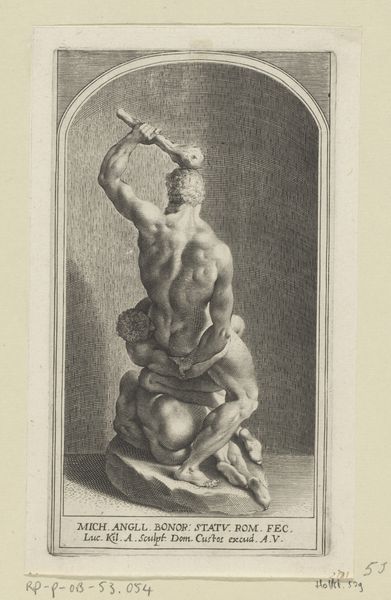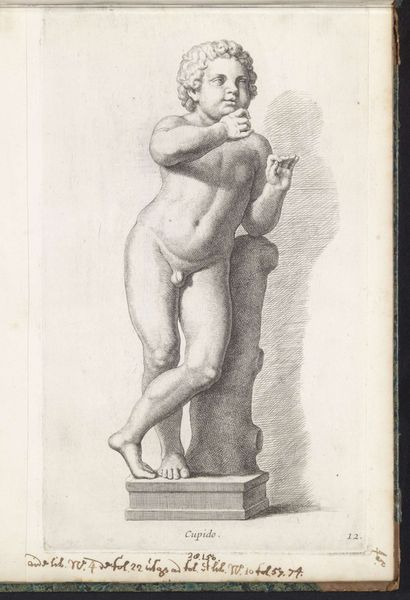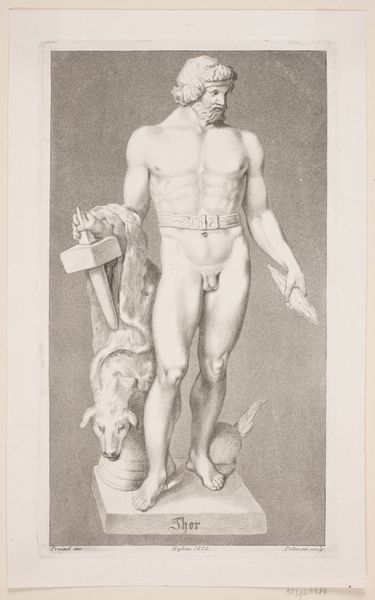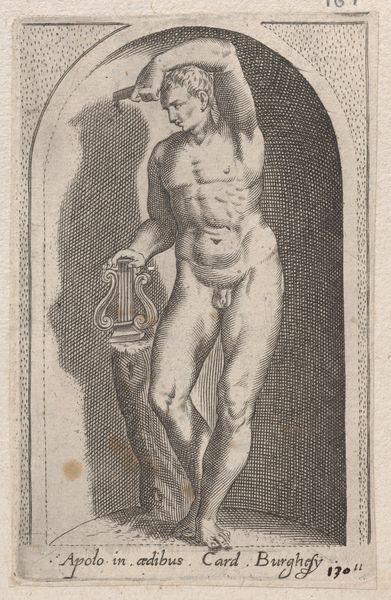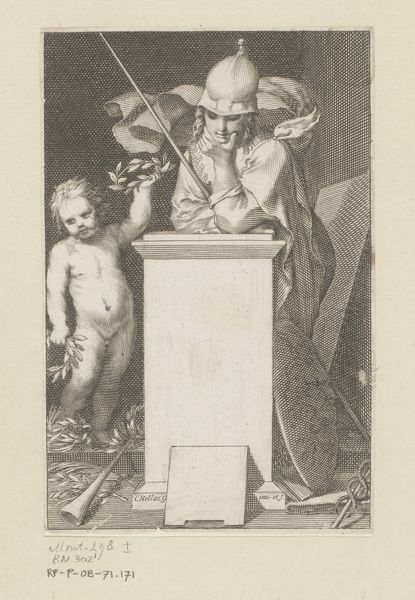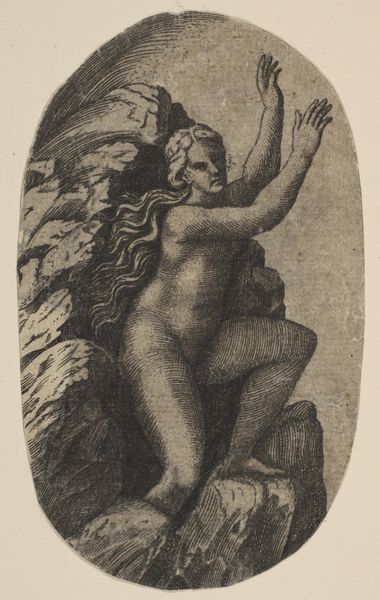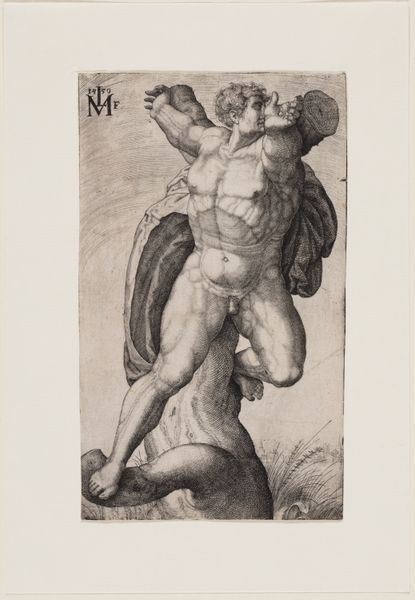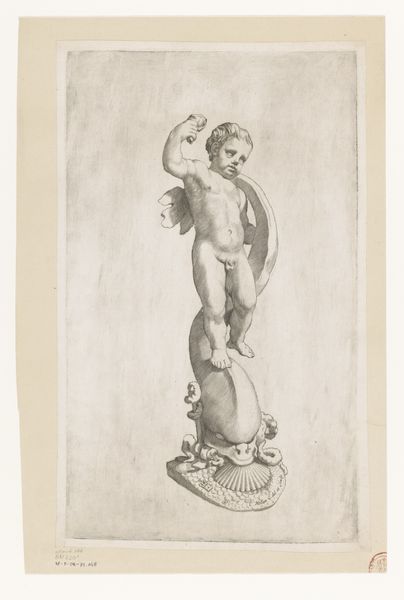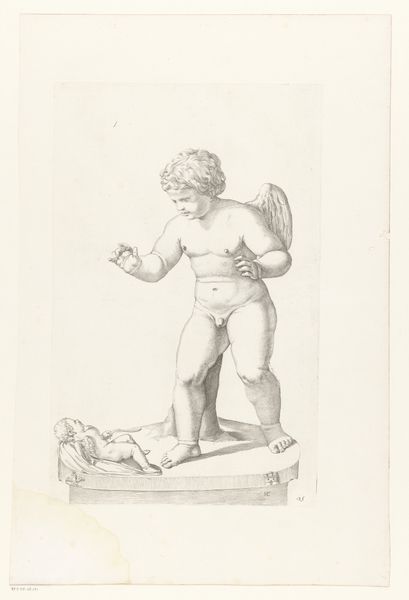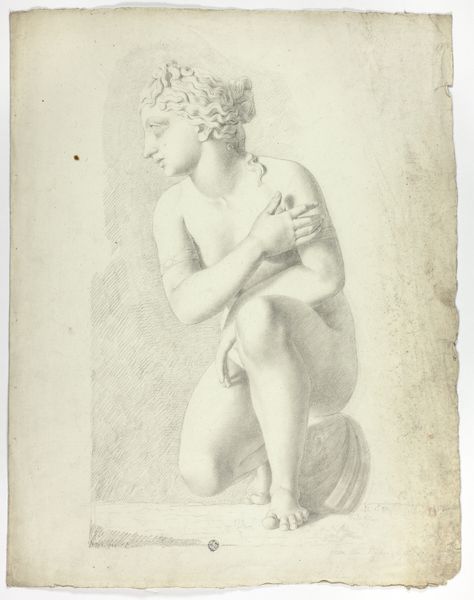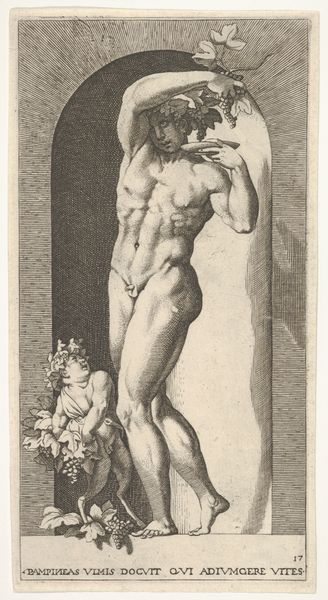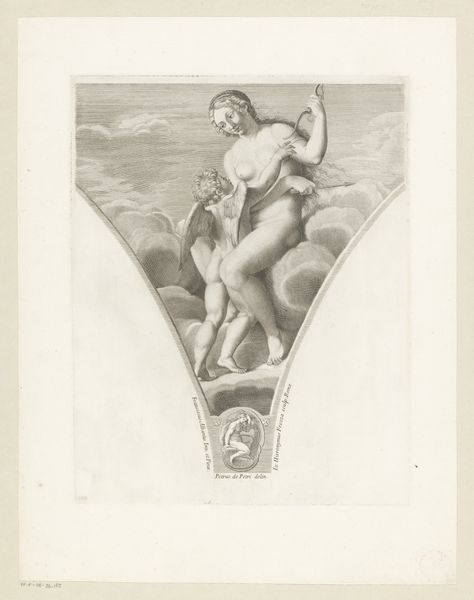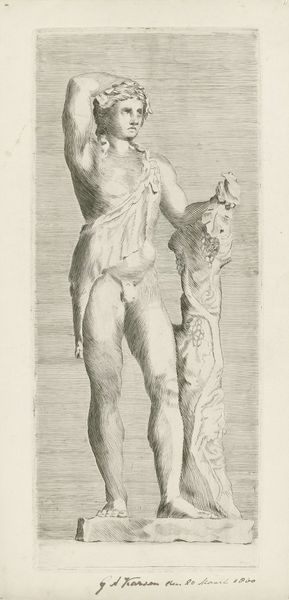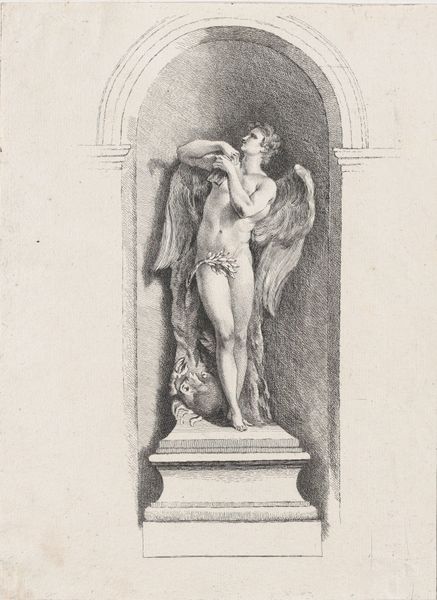
engraving
#
allegory
#
baroque
#
figuration
#
nude
#
engraving
Dimensions: height 315 mm, width 207 mm
Copyright: Rijks Museum: Open Domain
Editor: Here we have Richard Collin's "Cupido" from 1676, an engraving held at the Rijksmuseum. I find the texture really interesting; you can almost feel the surface of the print despite it being a flat image. What are your thoughts? Curator: Looking at the piece, what stands out to me is the tension between the "high art" subject matter – a classical allegory of Cupid – and the relatively accessible medium of engraving. Consider the social context: prints like these were reproducible, circulated widely, and often served as visual propaganda or accessible forms of artistry. Editor: That's fascinating! I hadn't thought about the engraving as a democratizing force. Did that cheapen the subject in any way, do you think? Curator: It complicates it. Engraving involved skilled labor. Think about the tools, the techniques, the workshops… Each line on this print represents a deliberate action, a negotiation between the artist's intention and the limitations of the material. It could be seen as bringing the divine, in this case love, down to Earth. Editor: So, the material reality contrasts with the idealistic representation of Cupid. Is there also a consumer aspect you see as important? Curator: Absolutely. These engravings entered the homes of a rising middle class. The consumption of these images also fueled the workshop systems and supported a specific economic network. What are your closing thoughts? Editor: I’ll certainly look at engravings differently from now on. Seeing the image through its process gives me a new understanding of its value. Curator: Indeed. Examining the materiality and production unveils stories often hidden beneath the surface.
Comments
No comments
Be the first to comment and join the conversation on the ultimate creative platform.
